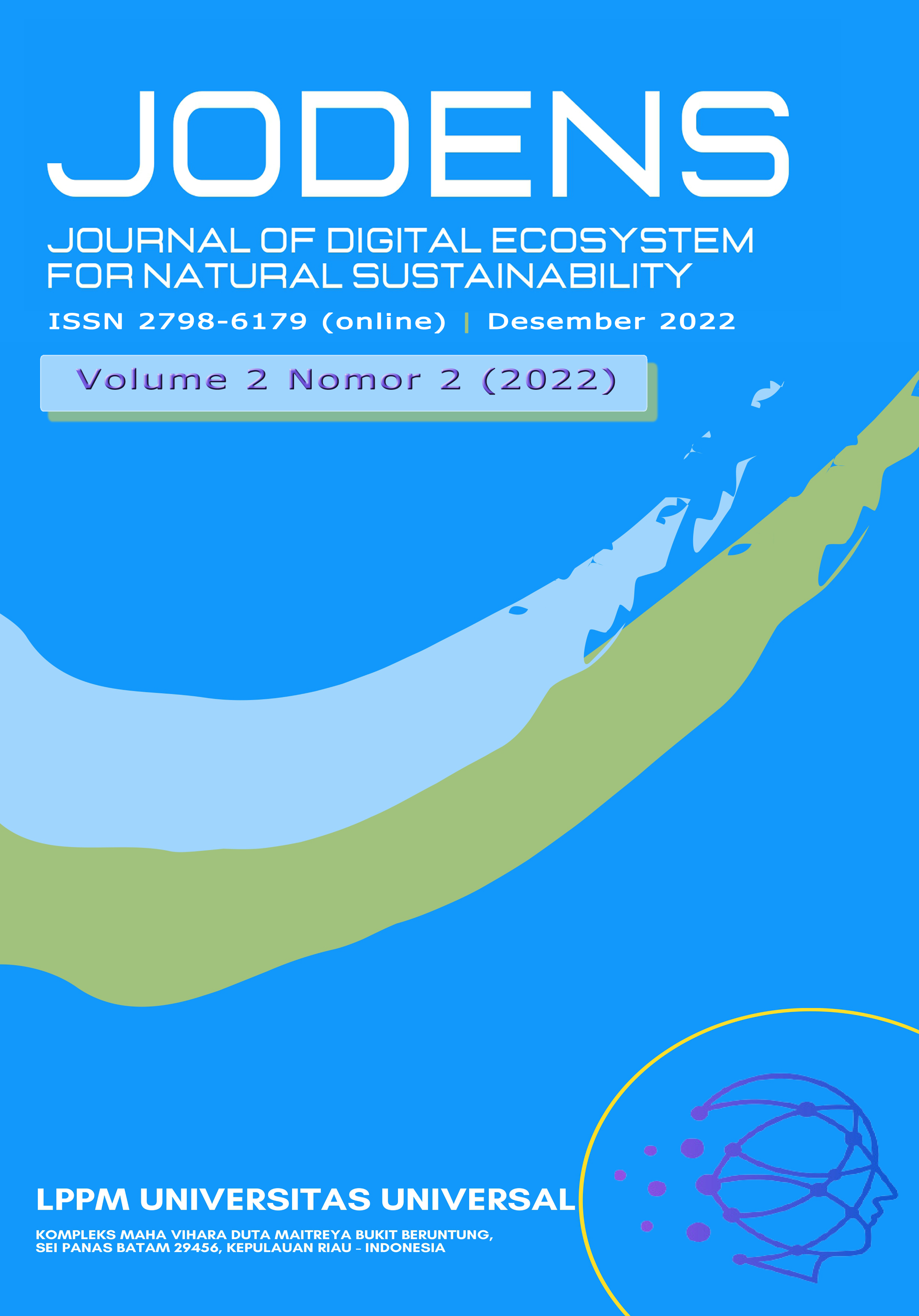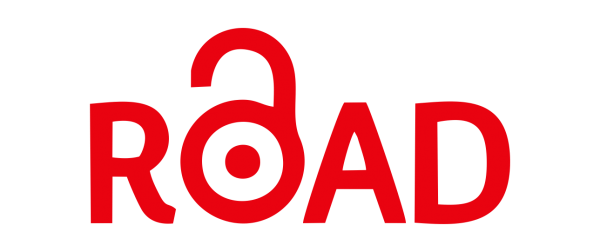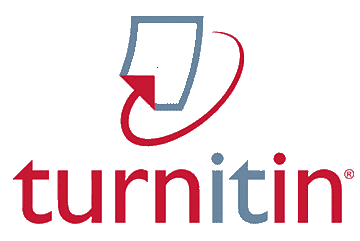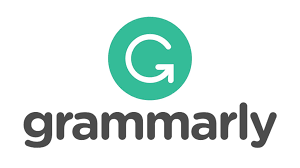Ambarella Fruit Ripeness Classification based on EfficientNet Models
DOI:
https://doi.org/10.63643/jodens.v2i2.106Kata Kunci:
Ambarella fruit, EfficientNetV2, Fruit ripeness, Fine-tuningAbstrak
Evaluating the fruit’s maturity level is crucial to acquiring high-quality fruit. The skin color of some fruits may be used as one of the numerous indicators to determine whether they have achieved their peak degree of ripeness. Similar to other fruits, the skin color of an Ambarella fruit indicates its maturity. However, determining the ripeness of the Ambarella fruit was assessed manually, which is time-consuming, inefficient, taxing, requires a large number of employees, and has the potential to result in discrepancies. This study aims to classify the ripeness of the Ambarella fruit using the deep learning approach, specifically using the Convolutional Neural Network (CNN). The new family of EfficientNetV2 is trained to classify the Ambarella fruit ripeness. The pre-trained models are utilized in this work, and the training was done via transfer learning through fine-tuning. EfficientNetV2B0 achieves the highest accuracy of 100% despite having a smaller size than the other EfficientNetV2 models used in this work.
Referensi
A. Bashir, S. Suhel, A. Azwardi, D. P. Atiyatna, I. Hamidi, and N. Adnan, “The Causality Between Agriculture, Industry, and Economic Growth: Evidence from Indonesia,” Etikonomi, vol. 18, no. 2, pp. 155–168, 2019, doi: 10.15408/etk.v18i2.9428.
G. Prayitno, A. Hayat, A. Efendi, H. Tarno, Fikriyah, and S. H. Fauziah, “Structural Model of Social Capital and Quality of Life of Farmers in Supporting Sustainable Agriculture (Evidence: Sedayulawas Village, Lamongan Regency-Indonesia),” Sustainability, vol. 14, no. 19, p. 12487, Sep. 2022, doi: 10.3390/su141912487.
P. A. Wibowo Putro, E. K. Purwaningsih, D. I. Sensuse, R. R. Suryono, and Kautsarina, “Model and implementation of rice supply chain management: A literature review,” Procedia Comput Sci, vol. 197, pp. 453–460, 2022, doi: 10.1016/j.procs.2021.12.161.
J. Mariyono, A. Kuntariningsih, and T. Kompas, “Pesticide use in Indonesian vegetable farming and its determinants,” Management of Environmental Quality: An International Journal, vol. 29, no. 2, pp. 305–323, Mar. 2018, doi: 10.1108/MEQ-12-2016-0088.
A. Widi, E. D. Sari, and S. Jahroh, “The Change of Fruit Supply Chain in Response to Covid-19 Pandemic in West Java, Indonesia (Case Study of Anto Wijaya Fruit),” J Phys Conf Ser, vol. 1764, no. 1, p. 012036, Feb. 2021, doi: 10.1088/1742-6596/1764/1/012036.
J. Pardede, M. G. Husada, A. N. Hermana, and S. A. Rumapea, “Fruit Ripeness Based on RGB, HSV, HSL, L∗a∗b∗ Color Feature Using SVM,” 2019 International Conference of Computer Science and Information Technology, ICoSNIKOM 2019, 2019, doi: 10.1109/ICoSNIKOM48755.2019.9111486.
I. Hayati, A. Hartana, and N. R. Djuita, “Modeling climatic suitable areas for kedondong (Spondias dulcis) cultivation in central part of Sumatra, Indonesia,” Biodiversitas, vol. 20, no. 12, pp. 3608–3618, Nov. 2019, doi: 10.13057/biodiv/d201220.
P. H. M. de Souza, F. R. Gomes, G. Z. da Silva, D. I. Rocha, S. C. S. Cruz, and D. F. P. da Silva, “Morphological characterization of fruits, endocarp, seed and seedlings of cajá-manga (Spondias dulcis),” Revista Ceres, vol. 68, no. 3, pp. 239–244, Jun. 2021, doi: 10.1590/0034-737x202168030010.
M. Mohammed, S. Hajar Ahmad, R. Abu Bakar, and T. Lee Abdullah, “Golden apple ( Spondias dulcis Forst. syn. Spondias cytherea Sonn.),” in Postharvest Biology and Technology of Tropical and Subtropical Fruits, Elsevier, 2011, pp. 159–180e. doi: 10.1533/9780857092885.159.
S. D. Ismanto, I. D. Rahmi, and A. Febrian, “The Influence of Drying Temperature on Chemical Components of Herbal Tea Leaves ( Spondias Dulcis , Soland ),” International Conference on Sustainable Agriculture, Food and Energy (SAFE 2016), no. October, pp. 1–8, 2016.
R. Rakhmawati and Y. Yunianta, “Effects of Proportion Fruit : Water and Heating Time on Antioxidant Activity of Hogplum Juice,” Jurnal Pangan dan Agroindustri, vol. 3, no. 4, pp. 1682–1693, 2015.
W. Castro, J. Oblitas, M. De-La-Torre, C. Cotrina, K. Bazan, and H. Avila-George, “Classification of Cape Gooseberry Fruit According to its Level of Ripeness Using Machine Learning Techniques and Different Color Spaces,” IEEE Access, vol. 7, pp. 27389–27400, 2019, doi: 10.1109/ACCESS.2019.2898223.
N. Aherwadi, U. Mittal, J. Singla, N. Z. Jhanjhi, A. Yassine, and M. S. Hossain, “Prediction of Fruit Maturity, Quality, and Its Life Using Deep Learning Algorithms,” Electronics (Basel), vol. 11, no. 24, p. 4100, Dec. 2022, doi: 10.3390/electronics11244100.
R. E. Saragih and A. W. R. Emanuel, “Banana Ripeness Classification Based on Deep Learning using Convolutional Neural Network,” in 3rd 2021 East Indonesia Conference on Computer and Information Technology, EIConCIT 2021, Apr. 2021, pp. 85–89. doi: 10.1109/EIConCIT50028.2021.9431928.
F. M. A. Mazen and A. A. Nashat, “Ripeness Classification of Bananas Using an Artificial Neural Network,” Arab J Sci Eng, vol. 44, no. 8, pp. 6901–6910, Aug. 2019, doi: 10.1007/s13369-018-03695-5.
V. Mohammadi, K. Kheiralipour, and M. Ghasemi-Varnamkhasti, “Detecting maturity of persimmon fruit based on image processing technique,” Sci Hortic, vol. 184, pp. 123–128, 2015, doi: 10.1016/j.scienta.2014.12.037.
I. B. Suban, A. Paramartha, M. Fortwonatus, and A. J. Santoso, “Identification the Maturity Level of Carica Papaya Using the K-Nearest Neighbor,” J Phys Conf Ser, vol. 1577, no. 1, 2020, doi: 10.1088/1742-6596/1577/1/012028.
K. Kangune, V. Kulkarni, and P. Kosamkar, “Grapes Ripeness Estimation using Convolutional Neural network and Support Vector Machine,” in 2019 Global Conference for Advancement in Technology (GCAT), Oct. 2019, pp. 1–5. doi: 10.1109/GCAT47503.2019.8978341.
Z. Ibrahim, N. Sabri, and D. Isa, “Palm oil fresh fruit bunch ripeness grading recognition using convolutional neural network,” Journal of Telecommunication, Electronic and Computer Engineering, vol. 10, no. 3–2, pp. 109–113, 2018.
R. E. Saragih, D. Gloria, and A. J. Santoso, “Classification of ambarella fruit ripeness based on color feature extraction,” ICIC Express Letters, vol. 15, no. 9, pp. 1013–1020, Sep. 2021, doi: 10.24507/icicel.15.09.1013.
Ma. C. v. Magabilin, A. C. Fajardo, and R. P. Medina, “Optimal Ripeness Classification of the Philippine Guyabano Fruit using Deep Learning,” in 2022 Second International Conference on Power, Control and Computing Technologies (ICPC2T), Mar. 2022, pp. 1–5. doi: 10.1109/ICPC2T53885.2022.9777014.
V. S. Prabhu, Y. M. Blessy, S. Balasubramani, M. Harshini, J. Jayashree, and G. Haneesha, “Automatic identification of ripening and quality grading of fruits using deep neural networks,” in AIP Conference Proceedings, 2022, vol. 2452, no. 1, p. 020001. doi: 10.1063/5.0114510.
Suharjito, G. N. Elwirehardja, and J. S. Prayoga, “Oil palm fresh fruit bunch ripeness classification on mobile devices using deep learning approaches,” Comput Electron Agric, vol. 188, p. 106359, Sep. 2021, doi: 10.1016/j.compag.2021.106359.
M. P. Arakeri and Lakshmana, “Computer Vision Based Fruit Grading System for Quality Evaluation of Tomato in Agriculture industry,” Procedia Comput Sci, vol. 79, pp. 426–433, 2016, doi: 10.1016/j.procs.2016.03.055.
A. Wajid, N. K. Singh, P. Junjun, and M. A. Mughal, “Recognition of ripe, unripe and scaled condition of orange citrus based on decision tree classification,” 2018 International Conference on Computing, Mathematics and Engineering Technologies: Invent, Innovate and Integrate for Socioeconomic Development, iCoMET 2018 - Proceedings, vol. 2018-Janua, pp. 1–4, 2018, doi: 10.1109/ICOMET.2018.8346354.
A. Koirala, K. B. Walsh, Z. Wang, and C. McCarthy, “Deep learning for real-time fruit detection and orchard fruit load estimation: benchmarking of ‘MangoYOLO,’” Precision Agriculture, vol. 20, no. 6. pp. 1107–1135, 2019. doi: 10.1007/s11119-019-09642-0.
F. Valentino, T. W. Cenggoro, and B. Pardamean, “A Design of Deep Learning Experimentation for Fruit Freshness Detection,” IOP Conf Ser Earth Environ Sci, vol. 794, no. 1, p. 012110, Jul. 2021, doi: 10.1088/1755-1315/794/1/012110.
V. Eyarkai Nambi, K. Thangavel, A. Manickavasagan, and S. Shahir, “Comprehensive ripeness-index for prediction of ripening level in mangoes by multivariate modelling of ripening behaviour,” Int Agrophys, vol. 31, no. 1, pp. 35–44, 2017, doi: 10.1515/intag-2016-0025.
K. Kipli et al., “Image Processing Mobile Application for Banana Ripeness Evaluation,” 2018 International Conference on Computational Approach in Smart Systems Design and Applications, ICASSDA 2018, pp. 1–5, 2018, doi: 10.1109/ICASSDA.2018.8477600.
M. Carlos et al., “Determining ‘ Carabao ’ Mango Ripeness Stages Using Three Image Processing Algorithms Determining ‘ Carabao ’ Mango Ripeness Stages using Three Image Processing Algorithms,” 2019.
M. Khojastehnazhand, V. Mohammadi, and S. Minaei, “Maturity detection and volume estimation of apricot using image processing technique,” Sci Hortic, vol. 251, no. January, pp. 247–251, 2019, doi: 10.1016/j.scienta.2019.03.033.
D. Worasawate, P. Sakunasinha, and S. Chiangga, “Automatic Classification of the Ripeness Stage of Mango Fruit Using a Machine Learning Approach,” AgriEngineering, vol. 4, no. 1, pp. 32–47, Jan. 2022, doi: 10.3390/agriengineering4010003.
S. H. Miraei Ashtiani, S. Javanmardi, M. Jahanbanifard, A. Martynenko, and F. J. Verbeek, “Detection of mulberry ripeness stages using deep learning models,” IEEE Access, vol. 9, pp. 100380–100394, 2021, doi: 10.1109/ACCESS.2021.3096550.
M. Tan and Q. v. Le, “EfficientNetV2: Smaller Models and Faster Training,” Apr. 2021, [Online]. Available: http://arxiv.org/abs/2104.00298
H. ben Fredj, S. Bouguezzi, and C. Souani, “Face recognition in unconstrained environment with CNN,” Vis Comput, no. 0123456789, Jan. 2020, doi: 10.1007/s00371-020-01794-9.
G. W. Thum, S. H. Tang, S. A. Ahmad, and M. Alrifaey, “Toward a Highly Accurate Classification of Underwater Cable Images via Deep Convolutional Neural Network,” J Mar Sci Eng, vol. 8, no. 11, p. 924, Nov. 2020, doi: 10.3390/jmse8110924.
D. O. Melinte and L. Vladareanu, “Facial Expressions Recognition for Human–Robot Interaction Using Deep Convolutional Neural Networks with Rectified Adam Optimizer,” Sensors, vol. 20, no. 8, p. 2393, Apr. 2020, doi: 10.3390/s20082393.
I. Kandel and M. Castelli, “How Deeply to Fine-Tune a Convolutional Neural Network: A Case Study Using a Histopathology Dataset,” Applied Sciences, vol. 10, no. 10, p. 3359, May 2020, doi: 10.3390/app10103359.
Unduhan
Diterbitkan
Cara Mengutip
Terbitan
Bagian
Lisensi
Hak Cipta (c) 2022 Raymond Erz Saragih, Yuni Roza, Akhmad Rezki Purnajaya, Kaharuddin Kaharuddin

Artikel ini berlisensi Creative Commons Attribution 4.0 International License.
















